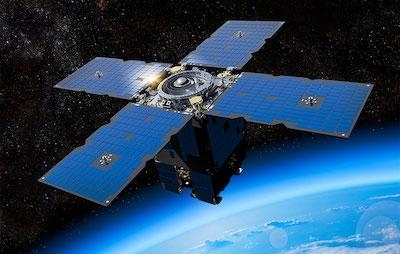Sun, Jan 05, 2020
Commissioning Phase For The DSAC Has Concluded
In early November, NASA ended the commissioning phase of the General Atomics Deep Space Atomic Clock (DSAC), the primary payload on-board GA-EMS’ Orbital Test Bed (OTB) satellite, with DSAC now in nominal operation to demonstrate its capabilities supporting deep space navigation and exploration. OTB was launched from Cape Canaveral on June 25, 2019 on a SpaceX Falcon Heavy rocket.

“OTB continues to operate nominally, and we are excited that DSAC is performing as anticipated,” stated Scott Forney, president of GA-EMS. “We continue to provide operation services to the Jet Propulsion Laboratory (JPL) and NASA for the currently scheduled year-long trial of DSAC’s functionality and utility for one-way-based space navigation. We are very excited to be supporting a project that has the potential to change the future of deep space navigation.”
DSAC is a miniaturized, ultra-precise, mercury-ion atomic clock designed and built at NASA’s JPL for NASA Space Technology Mission Directorate’s Technology Demonstration Missions Program. DSAC provides extreme accuracy and greater stability than today’s best navigation clocks to support exploration deeper into the solar system, as well as potentially provide benefits to Earth users worldwide.
“In addition to DSAC, commissioning of the other demonstration payloads on-board OTB continues according to each customer’s schedule,” stated Nick Bucci, vice president of Missile Defense and Space Systems at GA-EMS. “We anticipate OTB to remain mission capable for up to seven years, providing customers with a significant timeframe to perform and complete their individual mission objectives.”
GA-EMS’ OTB is a configurable, versatile platform designed to space-qualify multiple payloads on a single satellite. OTB increases the number of flight opportunities for customers looking to launch their payload into orbit without bearing the costly burden of designing, building and launching a dedicated spacecraft.GA-EMS works closely with customers to design and build OTB satellites that simultaneously meet multiple customer mission objectives and requirements. Launch and mission operation services are also provided by GA-EMS to support the full mission lifecycle for each customer payload.
(Image provided with General Atomics news release)
More News
Terminal Radar Service Area Airspace surrounding designated airports wherein ATC provides radar vectoring, sequencing, and separation on a full-time basis for all IFR and participa>[...]
Very High Frequency (VHF) The frequency band between 30 and 300 MHz. Portions of this band, 108 to 118 MHz, are used for certain NAVAIDs; 118 to 136 MHz are used for civil air/grou>[...]
“From approximately November 2021 through January 2022, Britton-Harr, acting on behalf of AeroVanti, entered into lease-purchase agreements for five Piaggio-manufactured airc>[...]
Also: Virtual FLRAA Prototype, IFR-Capable Autonomous A/C, NS-32 Crew, Golden Dome Missile Defense Bombardier announced that the first production Global 8000 successfully completed>[...]
Aero Linx: The 1-26 Association (Schweizer) The Association’s goal is to foster the helpfulness, the camaraderie, and the opportunity for head-to-head competition that is fou>[...]
 ANN's Daily Aero-Term (05.29.25): Terminal Radar Service Area
ANN's Daily Aero-Term (05.29.25): Terminal Radar Service Area ANN's Daily Aero-Term (05.30.25): Very High Frequency (VHF)
ANN's Daily Aero-Term (05.30.25): Very High Frequency (VHF) Aero-News: Quote of the Day (05.30.25)
Aero-News: Quote of the Day (05.30.25) Airborne 05.23.25: Global 8000, Qatar B747 Accepted, Aviation Merit Badge
Airborne 05.23.25: Global 8000, Qatar B747 Accepted, Aviation Merit Badge ANN's Daily Aero-Linx (05.30.25)
ANN's Daily Aero-Linx (05.30.25)



